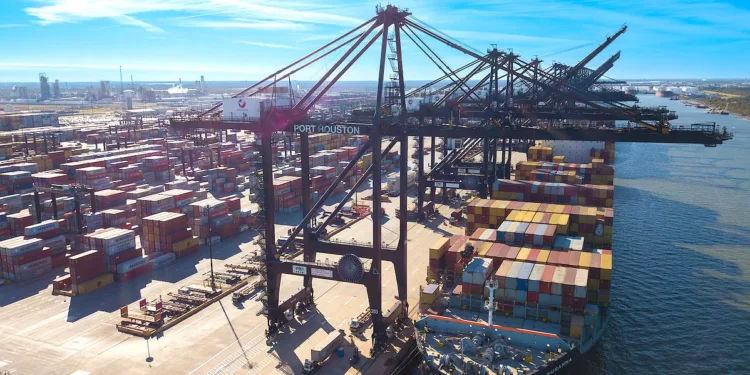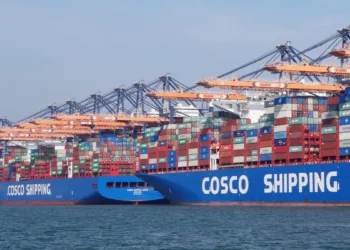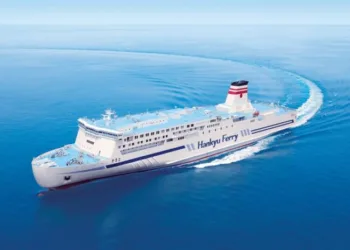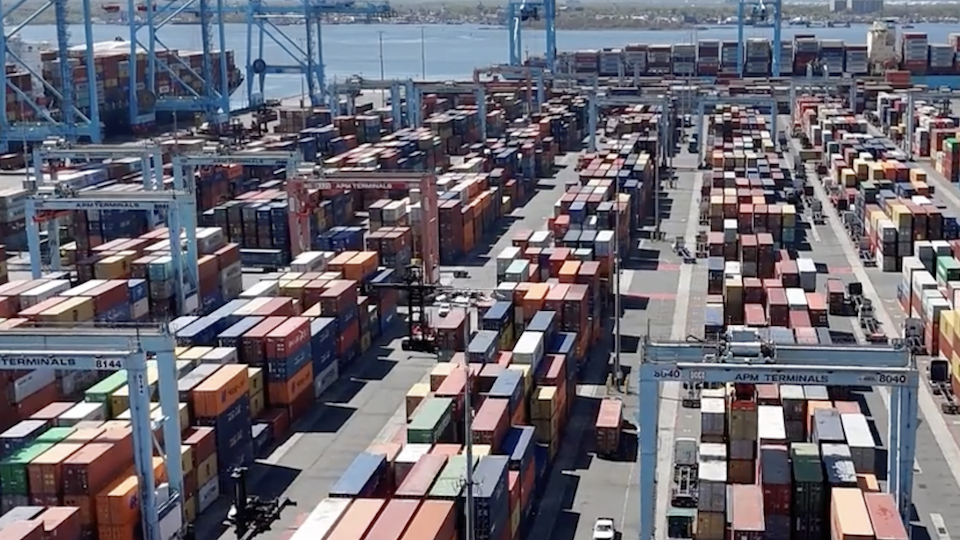Port Houston CEO Charlie Jenkins opened the 4th annual Houston International Maritime Conference (HIMC25) on Monday by calling on the maritime industry to take a more proactive stance as global trade patterns shift under tariff pressures, nearshoring trends, and new energy market dynamics.
The four-day event, held Sunday through Wednesday in downtown Houston, brought together almost 900 executives, ocean carriers, petrochemical producers, economists and trade stakeholders.
Sessions focused on expected changes in North American supply chains, container and tanker markets, and the role of Texas infrastructure in supporting freight growth across the Gulf Coast and U.S.–Mexico trade corridors.
“This conference is about supporting our industry, our region’s prosperity, bringing everybody together for thought, leadership, and insightful dialogue on the current and future outlook for Houston’s maritime industries,” Jenkins said during the event’s opening keynote address.
“They say everything is bigger in Texas and that gets worn out, but our port is so big, the gap is bigger than 97% of U.S. ports. That’s just a phenomenal fact about our success as a team. We’ve done a lot recently to help ensure the channel is safe, efficient, and competitive going forward.”
Global trade realignment: “More regional, less global”
During a session called “Global Currents: Navigating the Shifting Tides of Industry and Economy,” Paul Bingham outlined how tariffs and industrial policy are prompting companies to re-evaluate sourcing networks.
Bingham, director of trade and supply chain analysis at S&P Global, projected that global trade will not return to a pre-pandemic pattern, but will instead shift into more regionalized trading blocs — particularly around Southeast Asia and North America.
“Supply chains will be still undergoing revision and redesign in response to tariffs and we expect that that means supply chain changes are going to continue which affects modes, it affects commodities, it affects individual companies and in the aggregate it’s going to affect the U.S. economy trying to readjust to the new trade landscape,” Bingham said.
He noted that U.S. companies will likely deepen production integration with Mexico and Canada, depending on the upcoming USMCA review cycle.
“If nearshoring accelerates, we could see more cross-border freight with Mexico directly and changes in how Gulf Coast ports like Houston serve supply chains,” Bingham said.
Economic outlook: Slower local growth despite strong national demand
Jesse Thompson, senior economist at the Federal Reserve Bank of Dallas, said that Houston’s economy remains resilient but faces weakness in the oil and gas supply chain, which has slowed local job growth.
During a session titled “Houston’s Momentum: Economic Growth and the Road Ahead,” he noted that crude production is expected to remain flat into 2026, limiting upstream hiring even as LNG export capacity continues to expand.
“The Permian Basin has been the driver of our growth in crude oil production. When we look at our crude oil outlook, we’re really looking at flat production from here to the end of next year. I have some modest declines actually built in, exit to exit this year and next year, but that’s well within the margin of error,” Thompson said.
“We’re looking at a flattish production outlook for crude oil. But everything that’s coming up out of the ground … a huge portion of it for the last five years now at least, has had to go on a boat, because there’s no consumer for it.”
Texas freight corridors under pressure
A panel featuring Texas Department of Transportation (TxDOT) Senior Director Carolyn Mays highlighted how freight growth is straining the state’s highway system, even with record infrastructure investment.
“We’re known as the freight state, we’re known as the trade state for manufacturing, energy production, agriculture … we also produce a lot of lumber, we’re a very diverse state and trade really matters, and really for us at TxDOT, our No. 1 role is how do we facilitate economic development, economic competitiveness, how do we work with all of the different sectors to ensure that in order to make money, you have to move the stuff, whether you’re moving from the port to a warehouse, from a warehouse to dropping it at my doorstep or your doorstep, through Amazon, all of that moves through some transportation system, and the spine of that transportation system is really highways,” Mays said.
Mays noted that Texas will invest roughly $145 billion in transportation over the next decade, with major allocations supporting port access roads, border corridors, and truck-heavy distribution lanes. Yet, freight demand — particularly from Houston’s expanding port and industrial footprint — continues to outpace capacity.
“Yes, we’re pouring a lot of money into infrastructure, but because we’re growing so fast in population, we’re growing so fast on the trade side, we definitely have some pinch points,” she said.
Related: Panama Canal fights drought with $8.5B plan to secure future trade
The post Port Houston CEO: Maritime industry must adapt as trade markets shift appeared first on FreightWaves.




















